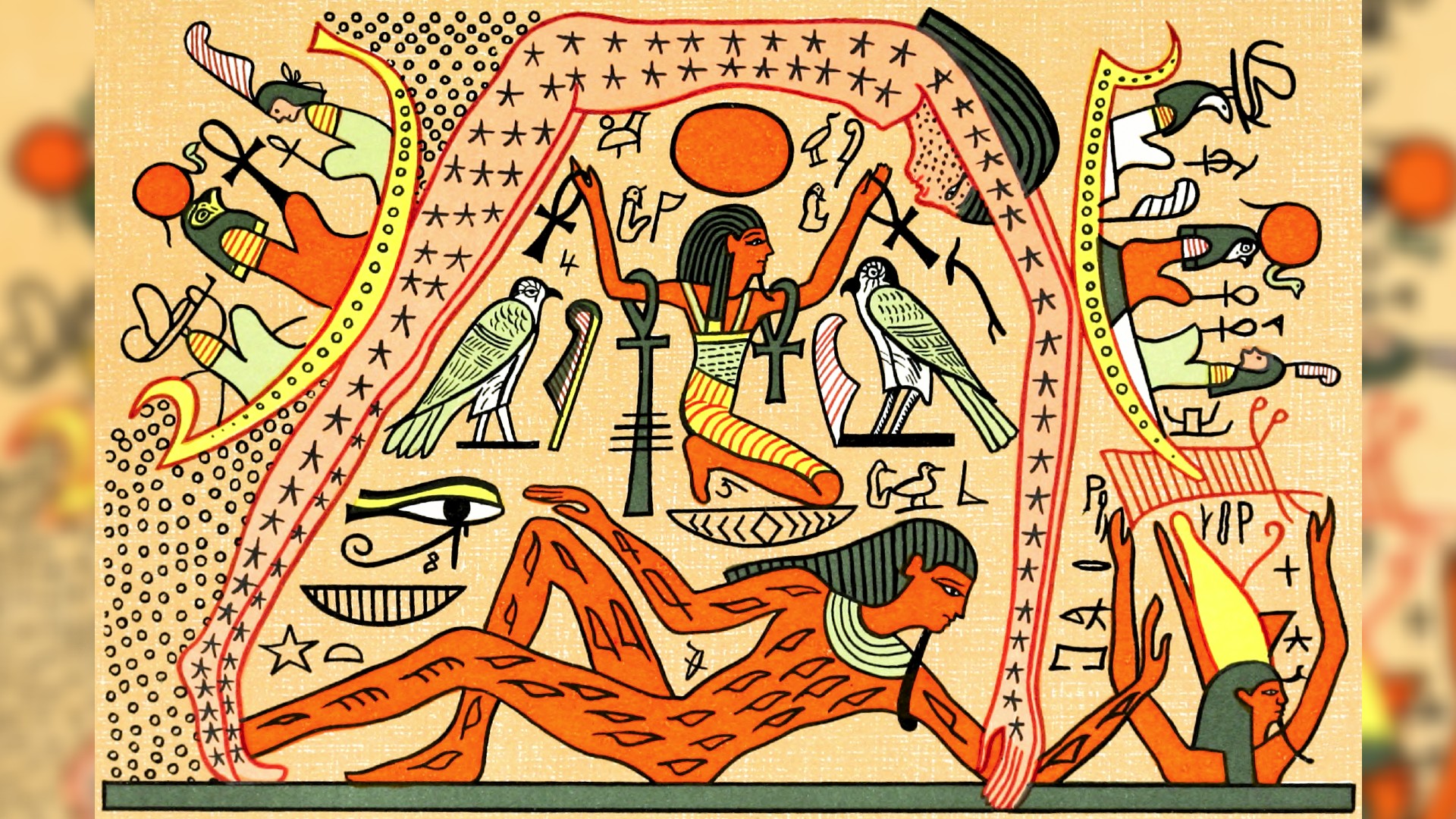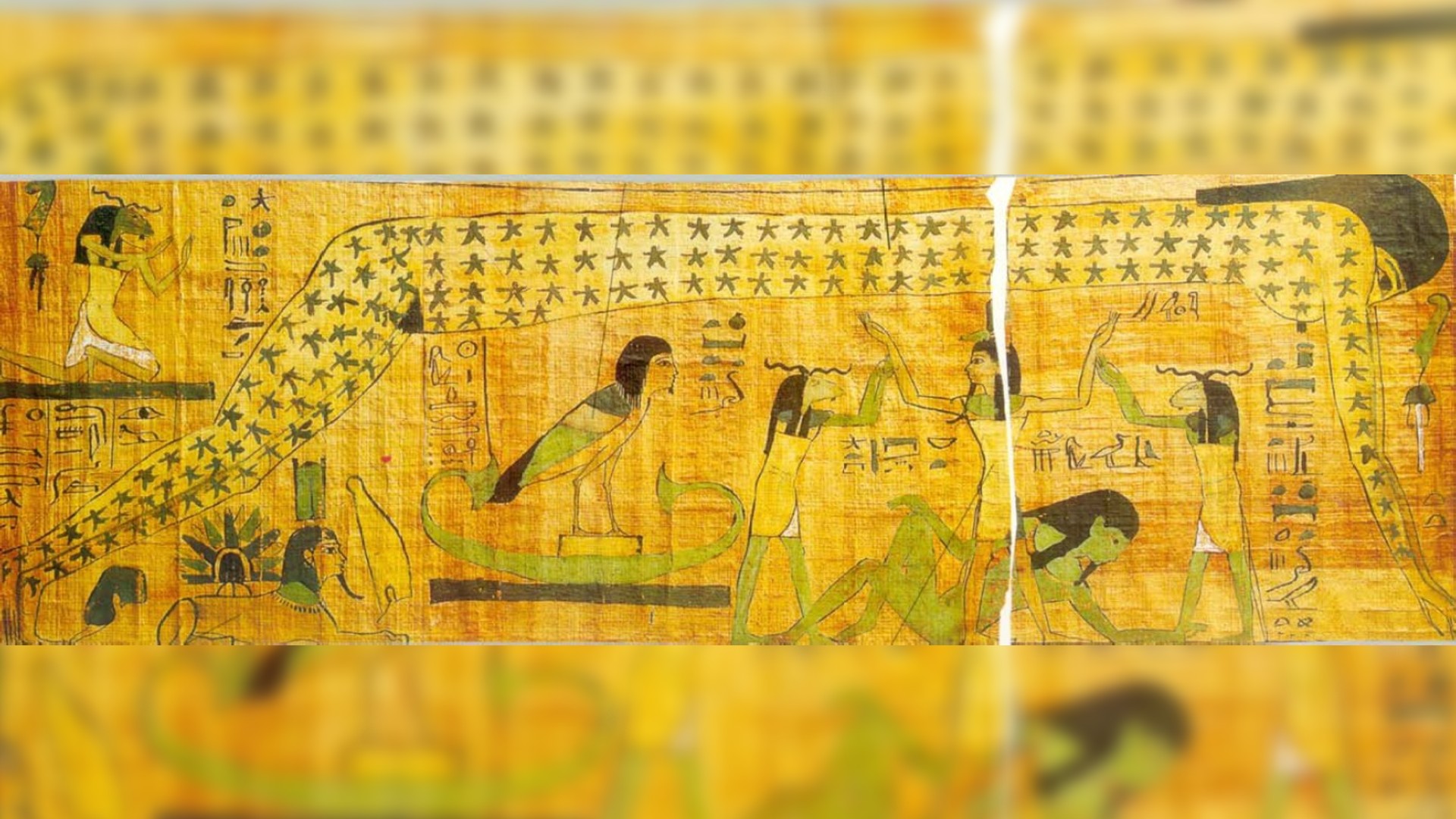These 5000-year-old Egyptian coffins depict the Milky Way galaxy, astrophysicist says
Ancient depictions of the Egyptian sky goddess may represent one of the earliest visual interpretations of the Milky Way galaxy, a new study suggests.

Ancient depictions of the Egyptian sky goddess Nut may represent one of the earliest visual interpretations of the Milky Way galaxy, a new study suggests.
In a recent study, astrophysicist Or Graur analyzed 125 images of Nut (pronounced "Noot") across 555 ancient Egyptian coffins dating back nearly 5,000 years. In only a few depictions, however, Nut is shown with a black curve bisecting her star-studded body. Graur says that curve could be an early depiction of our home galaxy.
"I think that the undulating curve represents the Milky Way and could be a representation of the Great Rift — the dark band of dust that cuts through the Milky Way's bright band of diffused light," Graur, who is an associate professor at the University of Portsmouth and research associate at the American Museum of Natural History, said in a statement. "Comparing this depiction with a photograph of the Milky Way shows the stark similarity."
In these depictions, Egyptian goddess Nut can be seen arching over the Earth god Geb, forming the sky. With her hands and feet touching the horizon, her body forms a protective dome over the world. According to Egyptian mythology, Nut swallows the sun god Ra each night and gives birth to him each morning, symbolizing the solar cycle.
Nut is often covered in stars in Egyptian imagery, representing the night sky and, in some instances, possibly the twinkling arc of the Milky Way stretched across the skies above Earth.

However, Graur argues that while there appears to be a connection between Nut and the Milky Way, the two are not one and the same because the sky goddess is not always drawn with the dark undulating curve believed to represent the galaxy's Great Rift.
"Nut is not a representation of the Milky Way," Graur added. "Instead, the Milky Way, along with the sun and the stars, is one more celestial phenomenon that can decorate Nut's body in her role as the sky."
Breaking space news, the latest updates on rocket launches, skywatching events and more!
This builds on Graur's initial study published last year connecting Nut and the Milky Way, and is part of a larger project focused on multi-cultural mythology of the Milky Way.
Graur's latest findings were published April 30 in the Journal of Astronomical History and Heritage.

Samantha Mathewson joined Space.com as an intern in the summer of 2016. She received a B.A. in Journalism and Environmental Science at the University of New Haven, in Connecticut. Previously, her work has been published in Nature World News. When not writing or reading about science, Samantha enjoys traveling to new places and taking photos! You can follow her on Twitter @Sam_Ashley13.
You must confirm your public display name before commenting
Please logout and then login again, you will then be prompted to enter your display name.
